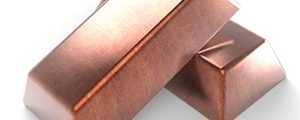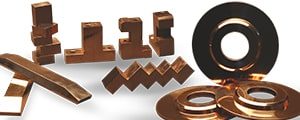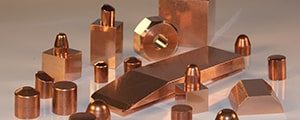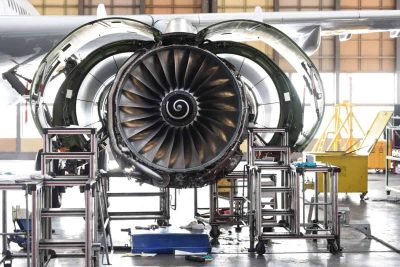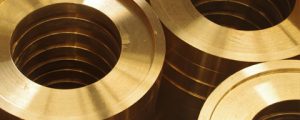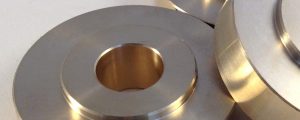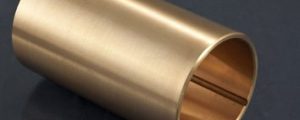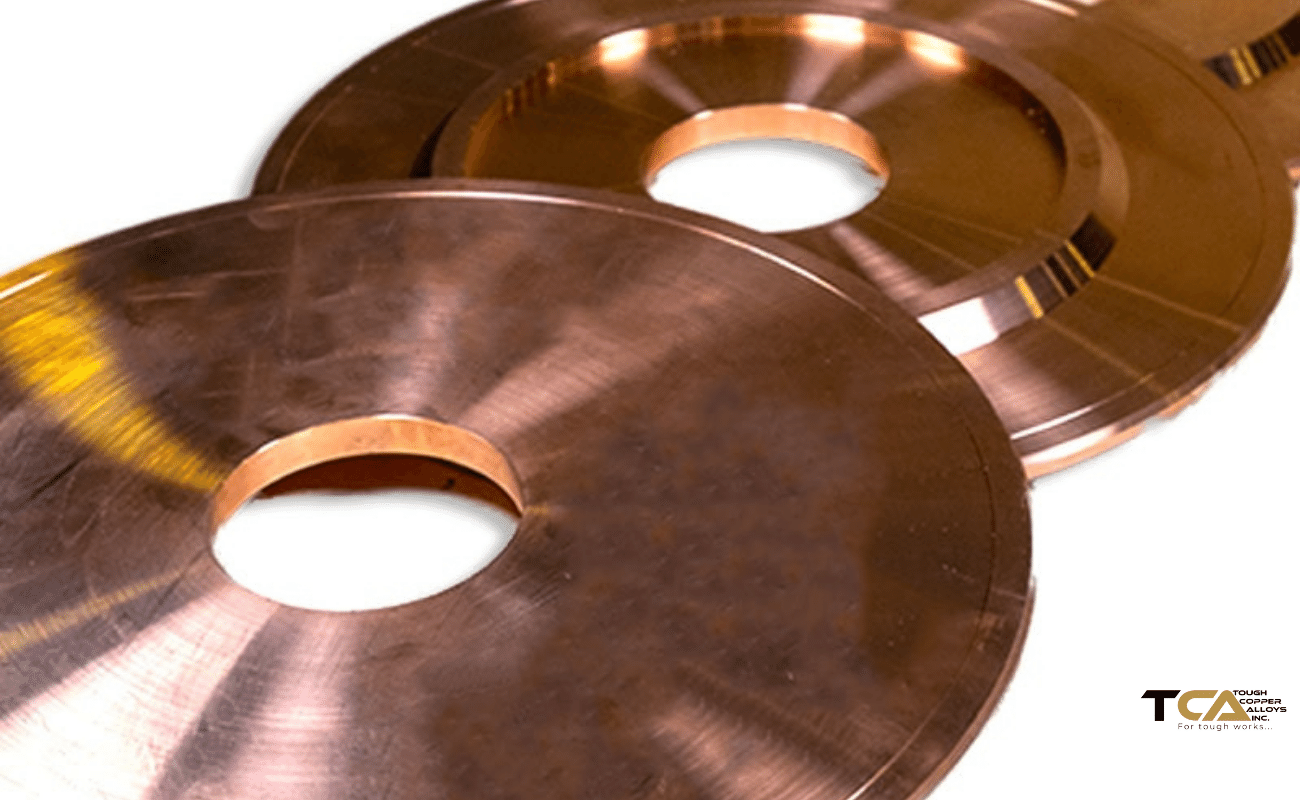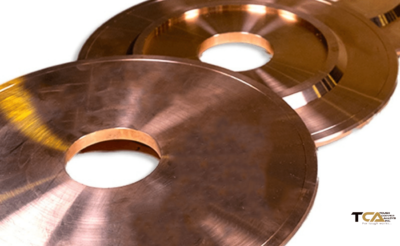What is “C18150” Material?
C18150 is a copper chromium zirconium alloy that is known for its excellent electrical and thermal conductivity, high strength, and resistance to corrosion. This material is often used in applications that require high-performance copper alloys, such as aerospace, automotive, and electrical industries.
C18150 material has a unique combination of properties that make it an excellent choice for use in high-stress environments. Its high thermal conductivity and low thermal expansion coefficient make it ideal for use in heat sinks and other cooling applications. Additionally, its high strength and excellent wear resistance make it suitable for use in high-temperature and high-pressure environments.
C18150 is often used in the manufacturing of electrical contacts and connectors, as well as in welding electrodes and electrodes for resistance welding. It is also commonly used in the production of molds and dies for the plastics industry, due to its high strength and wear resistance.
In summary, C18150 is a copper chromium zirconium alloy that offers excellent electrical and thermal conductivity, high strength, and resistance to corrosion. Its unique combination of properties makes it an ideal choice for use in high-performance copper alloy applications in various industries.
Fabrication Areas & Insdustries of “C18150”
Electrical and Electronic Industries:
C18150 is commonly used for electrical connectors, switch and relay parts, and circuit breaker components. Its high conductivity makes it ideal for applications that require efficient heat dissipation and reliable electrical performance.
Aerospace, Marine, and Automotive Industries:
C18150 is widely used in the aerospace, marine, and automotive industries. It is often used for components that require high strength and excellent corrosion resistance, such as gears, bearings, and shafts. Its ability to withstand harsh environmental conditions and resist corrosion makes it ideal for marine applications, while its high strength and toughness make it a popular choice for aerospace and automotive applications.
Medical, Defense, and Oil and Gas Industries:
C18150 is also used in the medical, defense, and oil and gas industries. In the medical industry, it is used for surgical instruments and implants due to its biocompatibility and resistance to corrosion. In the defense industry, it is used for missile and rocket components, while in the oil and gas industry, it is used for downhole drilling tools and valves.
Overall, C18150 is a versatile material that finds use in a wide range of industries and applications. Its unique properties make it an excellent choice for applications that require high strength, excellent corrosion resistance, and reliable electrical performance.
Common Fabrication Processes of Cupra Max
C18150 is a high-performance copper alloy that is known for its excellent strength, corrosion resistance, and thermal conductivity. This makes it a popular choice for a variety of applications in industries such as aerospace, marine, and electronics.
To create components and products from C18150, various fabrication processes are used. Here are some of the most common fabrication processes used for C18150:
- Machining: Machining is a process in which material is removed from a workpiece using cutting tools. It is a common fabrication process used for C18150, especially for creating complex shapes and parts with tight tolerances.
- Forming: Forming is a process in which metal is shaped by applying force. This can be done through rolling, forging, or extrusion. Forming is a popular fabrication process for C18150, as it allows for the creation of products with different shapes and sizes.
- Welding: Welding is a process in which two pieces of metal are joined together by melting them at the point of contact. Welding is often used for joining C18150 components in the manufacturing of products.
- Brazing: Brazing is a process in which two metal pieces are joined together by melting a filler metal that has a lower melting point than the base metals being joined. Brazing is often used for joining C18150 components and is a popular choice due to its ability to create strong and reliable joints.
- Heat treatment: Heat treatment is a process in which materials are heated and cooled to alter their properties. This process is commonly used for C18150 to improve its strength and hardness.
Overall, the various fabrication processes used for C18150 allow for the creation of products with unique shapes, sizes, and properties. Whether through machining, forming, welding, brazing, or heat treatment, C18150 can be fabricated to meet the specific needs of various industries and applications.
Chemical Composition of Cupra Max (C18150)
C18150 is a copper-nickel-beryllium alloy with a unique combination of high strength, good conductivity, and excellent corrosion resistance. The following table shows the chemical composition of C18150 in weight percentage:
| Element | Minimum % | Maximum % |
|---|---|---|
| Copper | 97.4 | 98.4 |
| Nickel | 1.80 | 2.30 |
| Beryllium | 0.40 | 0.70 |
| Cobalt | – | 0.20 |
| Iron | – | 0.20 |
| Lead | – | 0.05 |
| Manganese | – | 0.05 |
| Silicon | – | 0.10 |
| Sulphur | – | 0.06 |
| Zinc | – | 0.05 |
| Others | – | 0.50 |
As you can see, copper is the major constituent of C18150, with a minimum of 97.4% and a maximum of 98.4%. Nickel and beryllium are the main alloying elements, with nickel ranging from 1.80% to 2.30% and beryllium ranging from 0.40% to 0.70%. Small amounts of cobalt, iron, lead, manganese, silicon, sulphur, and zinc may also be present in the alloy, with a maximum limit of 0.50%.
The chemical composition of C18150 plays a crucial role in determining its mechanical and physical properties, making it an ideal material for a wide range of applications. Its high strength, good conductivity, and excellent corrosion resistance make it a popular choice for the aerospace, automotive, electronics, and medical industries, among others.
Physical Features
C18150 is a copper alloy that offers a unique combination of physical properties that make it ideal for use in a wide range of applications. Its physical properties include high electrical and thermal conductivity, excellent corrosion resistance, and good machinability.
The electrical conductivity of C18150 is approximately 45-60% IACS (International Annealed Copper Standard), which is higher than most copper alloys. This makes it an ideal material for use in electrical and electronic applications that require efficient heat dissipation and reliable electrical performance.
In addition to its high electrical conductivity, C18150 also has a high thermal conductivity. This property makes it an excellent choice for applications that require efficient heat transfer, such as heat sinks and cooling systems.
C18150 also exhibits excellent corrosion resistance, particularly in marine environments. Its resistance to corrosion makes it ideal for use in marine applications such as propeller shafts, valves, and pump components.
Another important physical property of C18150 is its good machinability. This means that it can be easily shaped and formed using standard machining processes, such as turning, milling, and drilling. This makes it an ideal material for use in applications that require complex shapes and precise tolerances.
Overall, the physical properties of C18150 make it a versatile material that can be used in a wide range of applications, particularly those that require high electrical and thermal conductivity, excellent corrosion resistance, and good machinability.
Fabrication Properties
C18150 is a copper alloy known for its high performance and excellent properties. Here are some of its key fabrication properties:
Machinability: C18150 has good machinability, which means it can be easily cut, shaped, and formed using a variety of machining techniques. This makes it a popular choice for applications that require precise dimensions and tight tolerances.
Weldability: C18150 can be welded using various welding techniques such as TIG, MIG, and resistance welding. However, it is important to use appropriate welding techniques and parameters to avoid any potential cracking or distortion.
Brazing: C18150 can also be brazed using various brazing methods, which is a process of joining two metal pieces with a filler metal that has a lower melting point than the metal being joined. Brazing is a preferred method when joining dissimilar metals.
Heat treatment: C18150 can be heat treated to improve its mechanical properties. This involves heating the material to a specific temperature and then cooling it at a controlled rate. Heat treatment can improve properties such as hardness, strength, and ductility.
Surface treatment: C18150 can be treated to improve its surface properties. This includes processes such as polishing, buffing, and electroplating, which can improve its appearance, corrosion resistance, and wear resistance.
In conclusion, C18150 is a versatile material that offers excellent fabrication properties. Its good machinability, weldability, brazing, heat treatment, and surface treatment capabilities make it a preferred choice for a wide range of applications in various industries.
Applicable Specifications
C18150 is a high-performance copper alloy that is used in a wide range of applications across various industries. It has excellent mechanical and electrical properties, making it a popular choice for many different types of projects.
To ensure that C18150 is used properly, it is important to follow applicable specifications and standards. The most common applicable specifications for C18150 include:
- ASTM B441: Standard Specification for Copper-Cobalt-Beryllium Alloy, Copper-Nickel-Beryllium Alloy Copper-Nickel-Lead-Beryllium Alloy, and Copper-Nickel-Tin-Beryllium Alloy Plate, Sheet, Strip, and Rolled Bar
- ASTM B534: Standard Specification for Copper-Cobalt-Beryllium Alloy and Copper-Nickel-Beryllium Alloy Plate, Sheet, Strip, and Rolled Bar
- AMS 4530: Copper-Beryllium Alloy, Plate, Sheet, Strip, and Rolled Bar
- AMS 4650: Copper-Beryllium Alloy Bars and Rods, Solution Heat Treated and Cold Worked
- RWMA Class 3: This is a specification developed by the Resistance Welding Manufacturing Alliance (RWMA) and is used for resistance welding electrodes made from copper alloys.
These specifications outline the requirements for the composition, mechanical properties, and other characteristics of C18150. Following these guidelines helps ensure that the material performs as expected and is safe to use in various applications.
In addition to these specifications, it is also important to follow any applicable industry or company standards and regulations when working with C18150. This helps ensure that the material is used safely and effectively in all applications.
Thermal Properties of “C18150”
Thermal Conductivity: C18150 has a high thermal conductivity, meaning it can efficiently transfer heat. This property makes it an ideal material for use in applications that require efficient heat dissipation, such as heat exchangers and cooling plates. The thermal conductivity of C18150 is 250 W/mK at room temperature.
Thermal Expansion: The thermal expansion of C18150 is relatively low compared to other copper alloys, making it a stable material that can withstand changes in temperature without deforming or cracking. Its coefficient of thermal expansion is 17.5 x 10^-6 /K at room temperature, which means that it expands by 17.5 microns per meter for every degree Celsius increase in temperature.
Melting Point: C18150 has a high melting point of 1083°C, which is similar to pure copper. This high melting point makes it a suitable material for use in high-temperature applications such as furnace components and heating elements.
In summary, C18150 has a high thermal conductivity of 250 W/mK, low coefficient of thermal expansion of 17.5 x 10^-6 /K, and a high melting point of 1083°C. These thermal properties make it a suitable material for use in various applications that require efficient heat dissipation, thermal stability, and high-temperature resistance.
Typical Uses
C18150 is a highly versatile copper alloy that finds use in a wide range of industries and applications due to its unique combination of properties. Its high electrical and thermal conductivity, excellent corrosion resistance, and high strength make it an ideal material for various applications.
Electrical and Electronic Applications: C18150 is commonly used in the electrical and electronic industries for applications such as electrical connectors, switch and relay parts, and circuit breaker components. Its high conductivity allows for efficient heat dissipation and reliable electrical performance, making it a preferred choice for such applications.
Aerospace, Marine, and Automotive Applications: C18150 is widely used in the aerospace, marine, and automotive industries for components that require high strength and excellent corrosion resistance. It is often used for gears, bearings, and shafts. Its ability to withstand harsh environmental conditions and resist corrosion makes it ideal for marine applications, while its high strength and toughness make it a popular choice for aerospace and automotive applications.
Medical, Defense, and Oil and Gas Industries: C18150 is also used in the medical, defense, and oil and gas industries. In the medical industry, it is used for surgical instruments and implants due to its biocompatibility and resistance to corrosion. In the defense industry, it is used for missile and rocket components, while in the oil and gas industry, it is used for downhole drilling tools and valves.
Overall, C18150 is a highly versatile material that finds use in a wide range of industries and applications. Its unique properties make it an excellent choice for applications that require high strength, excellent corrosion resistance, and reliable electrical performance.
Equivalents
C18150 is a high-performance copper alloy with unique properties that make it suitable for a wide range of applications. However, in some cases, designers and engineers may need to consider equivalent materials due to availability, cost, or specific application requirements.
One equivalent material to C18150 is C17510, which has similar properties and is often used in the same applications, such as electrical connectors and springs. Another alternative is C18200, which has slightly lower electrical conductivity but higher strength and hardness.
For applications that require higher strength and better wear resistance, C36000 or C46400 brass may be suitable alternatives. However, these materials do not offer the same level of electrical conductivity and corrosion resistance as C18150.
In some cases, aluminum alloys such as 6061 or 6063 may be used as substitutes for C18150, but they have lower thermal conductivity and may not be suitable for high-temperature applications.
Overall, while C18150 is a unique material with specific properties, there are several equivalent materials available that may be suitable for certain applications. Designers and engineers should carefully consider the requirements of their application and consult with material suppliers to select the best material for their specific needs.

